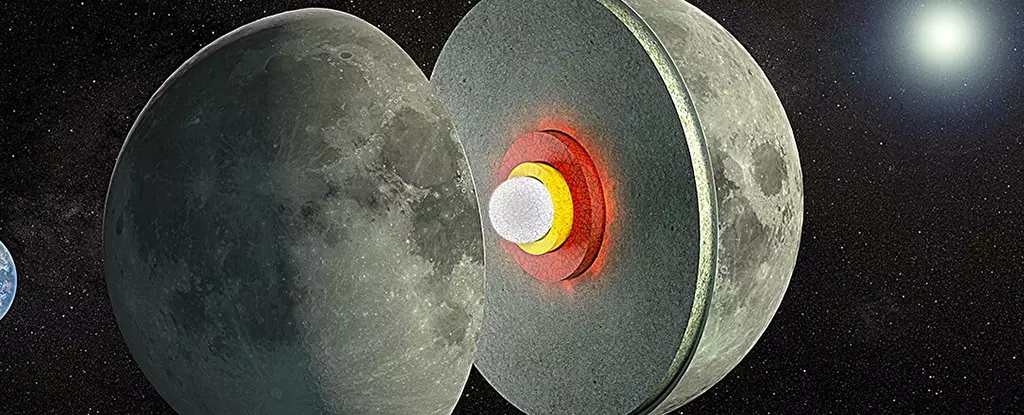Recent findings by a collaborative team of researchers from the NASA Goddard Space Flight Center and the University of Arizona are reshaping our understanding of the Moon’s internal structure. The study proposes the existence of a partially molten layer between the Moon’s rocky mantle and its solid metal core, a hypothesis that has long been speculated but lacked definitive evidence until now. By utilizing advanced data related to the Moon’s gravitational behavior and physical deformations influenced by Earth and the Sun, scientists have discovered compelling evidence suggesting that the lunar interior is not entirely solid.
The implications of a low-viscosity zone (LVZ) located at the base of the Moon’s mantle could be revolutionary. It raises questions about the mechanics of lunar geology and offers a glimpse into the Moon’s evolutionary history. By diving deeper into these new findings, we can foster a better understanding of not only the Moon but also the fundamental processes that shape planetary bodies.
The Moon’s shape and gravitational field are not static; they are influenced by the gravitational pull of both Earth and the Sun. This creates a tidal effect, albeit in a manner distinct from our ocean tides. Instead of water columns shifting, the Moon itself exhibits physical deformations that have profound consequences for its internal structure. The recent research effectively utilizes data gleaned from NASA’s Gravity Recovery and Interior Laboratory (GRAIL) and Lunar Reconnaissance Orbiter missions, allowing for a newer perspective on the Moon’s mass and stiffness. For the first time, lunar tidal changes could be measured on an annual basis, giving scientists crucial insights into the Moon’s behavior as it orbits Earth.
As the team processed the data, they discovered that in order for their models to accurately reflect lunar conditions, the mantle beneath the surface could not solely consist of solid rock. The presence of an LVZ seemed to fit the bill, suggesting an area that is not only viscous but also capable of exhibiting movement.
The study also prompts questions about the formation and maintenance of this suspected molten layer. Researchers speculate that ilmenite, a titanium-iron oxide mineral, may play a critical role in creating this low-viscosity layer. This finding aligns with observational evidence from Mars, where seismic data has suggested similar conditions. The link between ilmenite and partial melting could offer explanatory power not only for the Moon but also for planetary bodies within our solar system.
Understanding how this viscous zone retains heat is another layer of complexity in this inquiry. Why does this supposedly molten area remain hot enough to sustain its semi-liquid state? Investigating the thermal dynamics could prove crucial for understanding the Moon’s evolutionary processes over billions of years. This ongoing search for answers has the potential to bridge gaps in our knowledge about not just lunar geology but planetary science as a whole.
As we stand on the brink of an era focused on lunar exploration, the possibility of establishing a permanent base on the Moon presents exciting opportunities for direct study. If operational, a lunar base equipped with seismic sensors would grant scientists the ability to gather first-hand data about the Moon’s interior, offering the potential to validate existing theories with empirical evidence. This could lead to a significant leap in our understanding of the Moon’s thermal state, its history, and its ongoing evolution.
The ongoing investigation into the existence of an LVZ has profound implications not only for understanding the Moon but could also provide clues about other planetary bodies that share characteristics with our natural satellite. As research advances, the Moon may soon reveal its secrets, contributing to a larger narrative about the geophysical processes that govern celestial bodies throughout the universe. The combination of meticulous scientific inquiry and burgeoning technological capabilities positions humanity to unveil the Moon’s mysteries, enriching our knowledge of the cosmos.


Leave a Reply